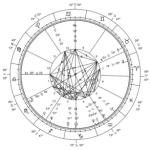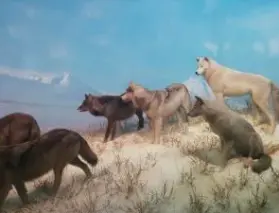 Time goes by. The future comes towards us—or, to some, we move towards it. The future arrives in the present. Then both settle into the past, gone but not forgotten.
Time goes by. The future comes towards us—or, to some, we move towards it. The future arrives in the present. Then both settle into the past, gone but not forgotten.
Or so it seems. Here’s a more hard-nosed description: there is no past or future at all; there are just lives—the lives of animals, plants and microbes—running our course through days and seasons. We live in the present. Being alive is a present state, a current condition; we can’t literally “live in the past.” We store experience in bodily memory and detailed recollection and call that storage the past. We draw on it continuously so we can manage the present and can imagine, wish for, plan on, and worry about the future. Time is the name we give this flow, but it is we, not time, that are flowing.
One of the most romantic treatments of time is the song “As Time Goes By” from the 1942 film Casablanca, a war-time romance set in Morocco, in northern Africa, on the edge of the conflict among the Germans, French and Americans. At his nightclub, Rick (Humphrey Bogart) hears the club’s entertainer Sam (Dooley Wilson) playing a song that Rick has tried hard to forget. The woman he had loved in Paris, Ilse (Ingrid Bergman), now married, has arrived at the club and is asking Sam about Rick. Here’s the clip on YouTube if you are interested: https://www.youtube.com/watch?v=7vThuwa5RZU
You must remember this
A kiss is still a kiss
A sigh is just a sigh
The fundamental things apply
As time goes by.
And when two lovers woo
They still say “I love you”
On that you can rely
No matter what the future brings
As time goes by….
It’s still the same old story
A fight for love and glory
A case of do or die
The world will always welcome lovers
As time goes by.
Despite its sentimentality, the song captures some of the complexities of our experience of time. On the one hand, time passes; that is, life goes by. Present moments and whatever the ‘future brings’ sink into the past. We ‘must remember’ that the ‘fundamental things apply’: We live, we love, and we feel the pain of loss.
But the passage of time is not all grim persistence. The fundamentals include their share of renewal and opportunity. ‘Love songs’ are ‘never out of date’ and ‘the world will always welcome lovers.’ The fight for love and glory, doing or dying, comes around again and again. As Darwin might have interjected, the ‘same old story’ is, after all, the tale of struggle, survival, and reproduction for all species.
If lives depend on these cycles, they do so in part because of three repetitions that are larger than we are: the rotations of the earth, the orbiting of the moon around the earth, and the orbiting of the earth around the sun. All of these cycles have embedded themselves in bodies.
- The daily (circadian) rhythm of darkness and daylight, cold and warmth, triggers sleeping and waking, resting and our energy.
- The moon pulls the tides twice a day. And as it waxes and wanes each month, it lightens and darkens the night. Under a bright moon, lions hunt and snakes hide. Many species have adapted to these moon-patterns in order to survive.*
- Earth’s yearly orbit around the sun brings the four seasons, prompting flowering, mating, ripeness, hibernation.
These rhythms are built into genes. “Clock-proteins” switch genes on when conditions are good and become built-in timers that operate even when the conditions are absent. Birds living for years in a controlled environment with 10 hours of light and 14 hours in the dark will molt at the same time of year that they would have in the wild.
So ‘the fundamental things’ include biological clocks of many kinds—in scientific parlance, chronobiology. Hardly a romantic term. I can hear Bogey: “So that’s what they’re calling it these days, eh, sweetheart.”
Time is our fiction of the past, present, and future. What actually ‘goes by’ are lives, through another day, another season, to the rhythms of the earth, moon, and sun.
__________
The Spiritual Naturalist Society works to spread awareness of spiritual naturalism as a way of life, develop its thought and practice, and help bring together like-minded practitioners in fellowship.
*Both the moon’s cycle and a woman’s menstrual cycle average about 28 days and many women feel synched to the phases of the moon. So it’s tempting to conclude that the moon was an evolutionary source for the duration of women’s cycles. But the evidence doesn’t point that way. See Wikipedia on Menstruation/evolution.













